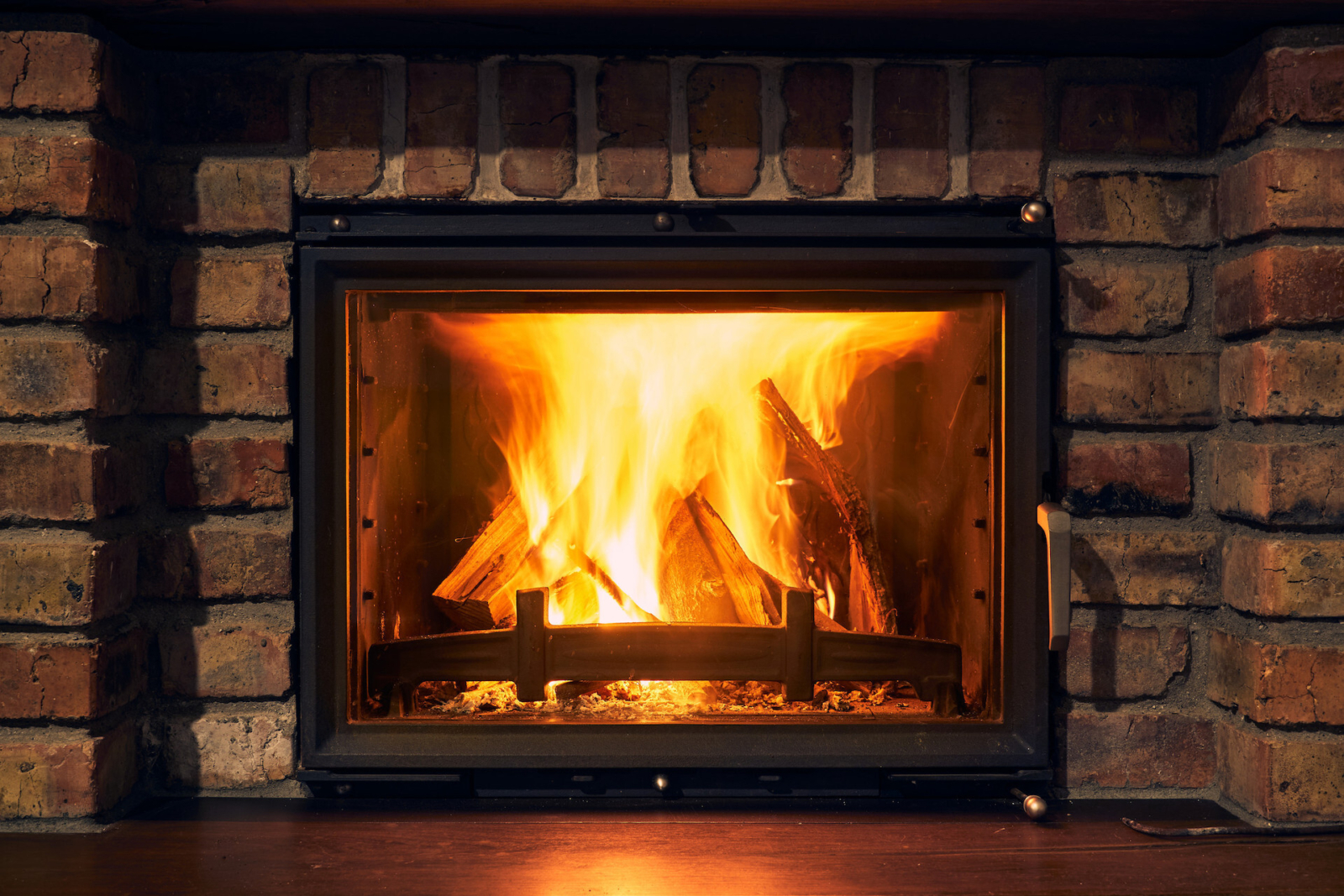The Ultimate Guide to Fireplace Safety: What You Need to Know

As temperatures drop, there’s nothing quite as relaxing as a warm, cozy fireplace. However, fireplaces—whether wood-burning, gas, or electric—require proper understanding, use, and maintenance for safety. Improper use of your fireplace can lead to serious hazards, including house fires, fire damage, carbon monoxide poisoning, and smoke inhalation.
In this guide, we’ll cover essential fireplace safety tips you need to know, including how to safely put out a fire, whether it’s safe to leave embers overnight, the impact of fireplaces on heating bills, and the do’s and don’ts of materials you can and cannot burn.
How to Safely Put Out a Fire in Your Fireplace
One of the most common mistakes homeowners make is assuming that a fire is completely out when the flames disappear. Even after the flames are gone, embers can remain hot for hours and reignite unexpectedly so it’s important to completely extinguish a fire in your fireplace for safety when you are no longer using it. Here are some tips to do just that:
Spread the embers – Use a fireplace poker to spread out the remaining embers to help them cool faster.
Cover with ash or sand – If you have an ash bed, spread a thin layer over the embers. Alternatively, use dry sand to smother the fire.
Use baking soda – Sprinkling baking soda over the embers helps eliminate any remaining heat and minimizes the risk of re-ignition.
Let the embers sit – Wait at least several hours before attempting to remove ash from the fireplace.
Dispose of ashes properly – Place cooled ashes in a metal container with a lid and store it away from your home and combustible materials.
Is It Safe to Go to Bed with Embers in the Fireplace?
It is never safe to go to bed while embers are still glowing in the fireplace. Even if the flames are out, hot embers can smolder and reignite if they come into contact with combustible materials or if there’s a sudden draft, so there is just no guaranteed safety until you know the fire is extinguished.
If you must leave the room, ensure the fire is completely out following the steps outlined above. Additionally, always close the fireplace screen or doors to prevent embers from escaping.
Can You Leave a Fireplace on All Night?
For safety reasons, a fireplace should never be left unattended overnight. We know it sounds nice, but there are reasons why this is unsafe that you need to understand. Here’s why:
Risk of uncontrolled fire – Even a small shift in burning logs could send sparks flying, potentially igniting nearby furniture or flooring.
Carbon monoxide poisoning – Gas fireplaces and wood-burning fireplaces produce carbon monoxide, which can accumulate if ventilation is inadequate.
Overheating risks – Prolonged heat exposure can cause damage to your fireplace structure, especially in older chimneys.
If you want to keep your home warm overnight, consider alternative heating sources such as an electric space heater, but make sure it is equipped with an automatic shut-off feature.
Do Fireplaces Save on Heating Bills?
The cost-effectiveness of using a fireplace depends on several factors, including the type of fireplace, insulation quality, and how your home distributes heat.
Wood-burning fireplaces – While they offer warmth in a single room, they can actually pull heated air from other areas of the house, making your central heating system work harder.
Gas fireplaces – These can be more efficient, particularly if they are direct-vent or vent-free models. However, running a gas fireplace continuously may increase energy costs.
Electric fireplaces – Something to think about… electric fireplaces provide steady heat without losing energy through a chimney, making them one of the most efficient supplemental heating options.
To maximize efficiency, you could consider installing a fireplace insert or ensuring proper insulation in your home.
Can You Pour Water on a Fireplace Fire?
While in an emergency, yes, but generally pouring water on a fire in your fireplace is not recommended. The reason why water is not recommended is because water can do the following:
Create a steam burn hazard – The sudden contact between water and hot embers can produce scalding steam.
Damage your fireplace – Water can cause bricks and mortar to crack due to rapid cooling.
Make cleanup more difficult – Wet ash creates a messy, sludge-like residue that is harder to clean.
Instead of water, try using the smothering techniques mentioned earlier in this blog to safely put out your fire.
What Can You Burn in a Fireplace?
Often people don’t think about what it is that they burn, but to ensure safety and air quality, only burn appropriate materials in your fireplace. Let’s go over what that means. Acceptable materials include:
✅ Seasoned hardwood – Oak, maple, and birch burn efficiently and produce less creosote buildup than softwoods.
✅ Fire logs – Manufactured logs designed for fireplaces are a cleaner-burning option.
✅ Kindling & untreated wood – Small, dry sticks and untreated wood pieces are good for starting fires.
Avoid burning:
❌ Treated or painted wood – Releases toxic fumes when burned.
❌ Paper or cardboard – Can produce flying embers that escape the fireplace.
❌ Plastic & synthetic materials – Releases harmful chemicals.
❌ Wet or green wood – Produces excess smoke and increases creosote buildup in the chimney.
To be extra safe, follow these additional Fireplace Safety Tips:
Install smoke & carbon monoxide detectors – After you install these detectors, remember to test them regularly to ensure they are functioning properly.
Keep flammable items away – Be sure furniture, curtains, and decorations are at least three feet away from the fireplace.
Use a fireplace screen – A fireplace screen prevents sparks from escaping and keeps pets and children safe.
Schedule annual chimney inspections – A professional should check for creosote buildup, cracks, or obstructions, do this yearly if possible.
Never leave a fire unattended – As mentioned above even the smallest flames or embers can pose a significant risk if left to burn out on their own. For these reasons, never leave your fire unattended and take the proper steps to ensure your fire is extinguished when you are done enjoying it!
Final Thoughts
A fireplace is the perfect addition to any home, providing warmth, comfort, and relaxation. However, it’s essential to use it responsibly. By following these safety guidelines—extinguishing fires properly, never leaving a fire unattended, and using only safe materials—you can enjoy your fireplace while keeping your home and family protected.
If you’re unsure about any aspect of fireplace safety, consult a professional chimney sweep or heating expert to ensure your fireplace is in top condition for the season. In the event of unexpected fire damage, ALL-CLEAN USA offers the Prime Promise program designed to minimize property downtime, income loss, and repair and reconstruction costs in the event of a property loss. Contact us to learn more! And, in the meantime, stay warm and stay safe!


